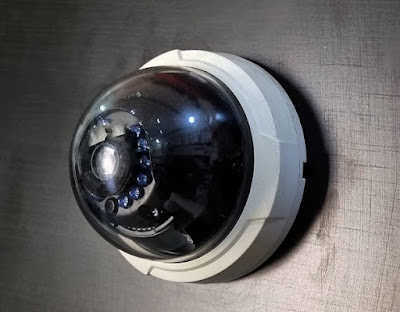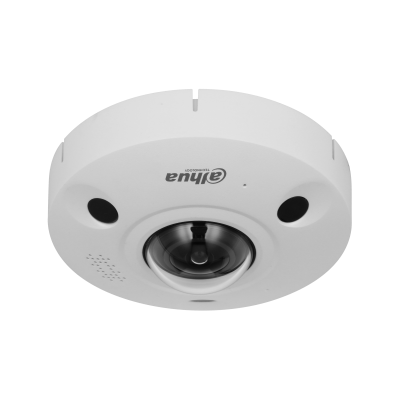Different types of CCTV Cameras : A Comprehensive Guide
There are many types of security cameras available in the market. When it comes to selecting a security camera, it's important to be familiar with the different types of CCTV cameras available in the market.
It is important to consider the following factors before choosing a CCTV camera or system.
The intention of the surveillance:
The intention of the surveillance:
What purpose is to install CCTV cameras on the premises? Are you trying to deter crime, monitor employees or record evidence?
Area of the Surveillance:
Area of the Surveillance:
Where will the cameras be located? Is this place situated outdoors?
Your Budget:
Your Budget:
It also depends that what is your budget because some of the special features cameras are really costly such as PTZ, Fisheye and 4G-enabled cameras.
Let's understand the types of security cameras and their features in this post.
- Bullet Cameras
- Dome Cameras
- Fish Eye Cameras
- PTZ Cameras
- Wi-Fi Indoor Cameras
- Wi-Fi Outdoor Cameras
- 4G Enabled Cameras
- Solar Cameras
- ANPR/LPR Cameras
- Covert Cameras
- Speed Cameras
Bullet Cameras:
 |
| Hikvision Bullet Camera |
The shape and size of bullet cameras are cylindrical in shape. Can recognize easily and is one of the most used CCTV camera types in the world. Bullet cameras are designed for outdoor environments and have features to resist water and dust and can work in very hot environments.
Advantages:
- Resistant to dust, dirt, and water.
- Can be used indoors and outdoors but usually it is used in an outdoor environment.
- Easy installation and management in comparison to other cameras.
Disadvantages:
- Can recognize from far away and can approximate the area of surveillance.
- Limited view of the area due to fixed position after mounted.
Dome Cameras:
Second most used CCTV cameras in the world. Dome cameras are designed for indoor environments and the shape of the cameras is just like a dome. The camera's lens makes it tough to recognize the point of surveillance.
 |
| Dome Camera |
Advantages:
- Less visible than bullet cameras.
- Can be used indoors or outdoors.
- Hard to find the surveillance area.
- Very appealing in looks.
- Easy installation.
Disadvantages:
- Dome cameras have installation limitations, primarily designed for ceiling or wall mount. If the installation location does not have a suitable surface for mounting the cameras, you should need some extra mounting options like a dome camera stand.
- The cost of dome cameras is generally high.
PTZ Cameras:
PTZ Cameras stands for Pan Tilt Zoom. Generally, this camera is used for surveillance of large areas. With the help of a joystick or mouse, you can monitor the approx. 360-degree area. The camera can be moved left, right up and down with the help of PTZ control.
These cameras can be very beneficial for a security guard who is monitoring live situations.
These cameras can be very beneficial for a security guard who is monitoring live situations.
 |
| A PTZ Camera |
Advantages:
- Support 15x-30x Zoom and autofocus support.
- Can support 100 to 200m Infrared night vision(IR).
- High-quality image resolution.
- Due to having features of PTZ(Pan-Tilt-Zoom), the Security team can monitor approximately 365 degrees of area.
Disadvantages:
- PTZ features can only be useful in live monitoring, but during playback, these cameras record the same as a normal bullet camera in just one direction.
- PTZ cameras can be relatively expensive compared to other cameras.
- Installation of PTZ cameras is not an easy task due to their weight and size.
Fish Eye Cameras:
Fish Eye cameras are circular in shape and in the center of the camera has an ultra-wide angle lens. These ultra-wide angle lenses provide a panoramic view of 180 degrees to 365 degrees Area. The images of fish eye cameras are normally warped in shape that's why these cameras as fish eye cameras.
Fish Eye cameras are generally used in Parking Lots, Retail Stores, Libraries, manufacturing sites and Airports.
Advantages:
- Generally, these kinds of cameras are used in Parking Lots, Retail Stores, Manufacturing sites and Libraries.
- Cover wide premises for monitoring.
- Cost-Effective: Due to wide area coverage, the cameras help to decrease the cost of installation.
Disadvantages:
- Fish eye cameras generate distorted images so it makes it difficult to identify objects or people.
- It generally comes with software to view and analyze the images.
Wi-Fi Indoor Cameras:
 |
| Imou Wi-Fi Indoor Camera |
Wi-Fi indoor cameras are best for baby and pet monitoring. Generally, these cameras have the ability to monitor video along with the audio. Generally, Wi-Fi cameras have the ability to pan and tilt features.
Wi-Fi cameras also feature motion detection, two-way talk and human detection.
Advantages:
- Pan tilt features of these cameras give the ability to monitor a wide area.
- Can support audio monitoring.
- Can talk with the help of the app and camera.
- Send live motion detection feed to the mobile app.
- Displacement is easy.
- Easy to install.
Disadvantages:
- Need Wi-Fi to work.
- There are no bigger storage options available. All cameras have the ability to read a very small amount of storage(SD-Card).
- The camera performance will be terrible if the Wi-Fi network signal is weak.
Wi-Fi Outdoor Cameras:
Wi-Fi outdoor camera has the ability to transmit video and audio signals wirelessly over a Wi-Fi network.
These cameras are specially designed for outdoor environments. Typically, these cameras come with IP-66 protection. Modern-day Wi-Fi outdoor cameras have many more features like motion detection, instant alerts, two-way audio support video compression etc.
Advantages:
- Hassle-free installation because there is no need for cabling.
- Water and dust resistant.
- Instant alerts reduce theft on your premises by approx. 75%.
Disadvantages:
- Problems with Wi-Fi connectivity because the cameras are installed in outdoor environments and Wi-Fi is generally inside the home. Due to this, the real-time view was affected.
- All Wi-Fi cameras are dependent on an Internet connection because these cameras need a reliable and continuous Internet connection.
4G Enabled Cameras:
4G cameras equipped with built-in cellular connectivity, allow transmitting video and images over a 4G mobile network.
These cameras have a 4G sim slot along with an SD card for storing the surveillance footage.
Advantages:
- There is no need for a modem or router for remote viewing of cameras.
- No need for DVR or NVR to work these cameras
- Most of these cameras come with a small solar panel and have also a battery for power backup due to this there is no cabling needed for the installation of these cameras.
- 4G Cameras come with cloud storage options.
Disadvantage:
- Generally, these cameras are much more costly.
- After ending the data pack of the sim generally, cameras go offline mode and after refilling the internet data pack need to reset the camera or should have to close the camera and restart it to make it online.
- Transmitting video and images over a cellular network consumes the internet data so you need to spend extra on data always.
Solar Cameras:
Solar cameras are equipped with solar panels that convert sunlight into electric energy to run the camera's operations. Solar power cameras are equipped with rechargeable batteries to store energy so can continue to operate during the night.
Solar cameras are basically used for monitoring the outdoor environment where the availability of electricity is null or much costly. The application of solar cameras in Farmlands, Highways, Festivals and Large warehouses or companies.
 |
| A solar camera installed in a farmhouse |
Advantages:
- There is no need for cable for the installation of these cameras so you can tell these cameras are cable-free cameras.
- All solar cameras come with power backup features for 24/7 surveillance.
- Solar cameras run on renewable energy so these cameras are also environment-friendly devices.
Disadvantages:
- Solar cameras may not generate enough power in cloudy or rainy weather, so maybe this affects video transmission and sometimes video storage.
- Typically solar cameras cost more than traditional surveillance cameras.
ANPR/LPR Cameras:
ANPR Stands for Automatic Number Plate Recognition and LPR stands for License Plate Recognition.
All these cameras contain special features like High Resolution, High frame rate and adjustable shutter speed. ANPR/LPR cameras are designed to capture the license plates of vehicles. These cameras come with a special kind of software for capturing and analyzing vehicles' number plates.
Area of application of ANPR/LPR cameras:
- Shopping Malls Parking
- Parking garage
- Car Wash Shop
- Petrol Pump
- Toll collection
- Traffic enforcement
Advantages:
Enhance security and law enforcement by quickly identifying suspicious vehicles involved in criminal activities, stolen vehicles, or vehicles associated with suspicious behaviour.
Previously this work was done by manual data entry and physical check but now ANPR/LPR cameras automate the task so it can save time and lowering labor costs.
Disadvantage:
Privacy concern, These cameras captures and store vehicle license plate which raises a concern about privacy and data protection.
These camera technologies improved over the years but also have some limitations regarding accuracy and limited recognition problems. Factors such as poor lighting, dirty license plate and sometimes the high speed of the vehicles can generate inaccurate data.
Hidden Cameras:
Hidden cameras are mostly used for spy purposes. The size of the cameras is tiny and has many shapes so that hard to recognize.
The shape of the cameras may be a pen, cloth hanger, a wall watch, an electric socket and anything may be an electric bulb.
Advantages:
- The purpose of these cameras is to reduce crime.
- These cameras' shape is so small that they can be used in investigative journalism, and for gathering evidence for investigation.
- In the case of harassment, stalking and abuse can use hidden cameras for evidence.
- Installation is easy because of the shape and size of these cameras.
Disadvantages:
- Attack on privacy, it violates the potential invasion of privacy.
- Without consent making surveillance.
- These cameras can be used for malicious purposes, like blackmail and extortion.
- Maximum areas using hidden cameras may be illegal.
Speed Cameras:
Speed cameras are a special kind of camera designed to capture the license plate of vehicles after violating the speed limit on the road.
These cameras are installed by traffic authorities for road safety and to lower road accidents.
These cameras capture an image of the number plate and a picture of vehicles, this evidence is used for generating a ticket by authorities to the vehicle owner.
Advantages:
- Promote road safety.
- Speed cameras can also help to increase traffic flow by reducing congestion.
- It also generates revenue for the government or agency that operates these cameras.
Disadvantages:
- Raise privacy concerns by some people because they collect the data of vehicle owner and their movements.
- Sometimes these cameras create fake evidence and create false tickets for the vehicle owner.
- Some people have the perception that this camera implementation on the road is just about revenue generation rather than improving road safety.
Conclusion:
In summary, CCTV cameras come in various types, and shapes, each designed for specific surveillance purposes. Understanding these camera options helps users to choose the right CCTV camera for their security needs.






Post a Comment